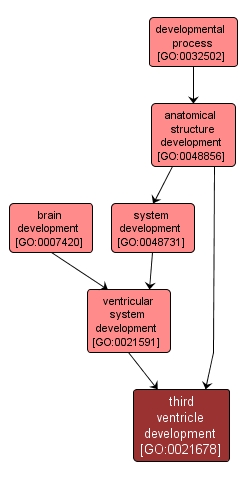| Desc: |
The process whose specific outcome is the progression of the third ventricle over time, from its formation to the mature structure. The third ventricle is the narrow cleft inferior to the corpus callosum, within the diencephalon, between the paired thalami. Its floor is formed by the hypothalamus, its anterior wall by the lamina terminalis, and its roof by ependyma, and it communicates with the fourth ventricle by the cerebral aqueduct, and with the lateral ventricles by the interventricular foramina. |














